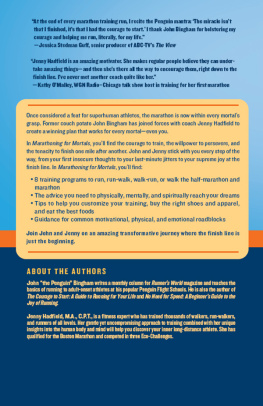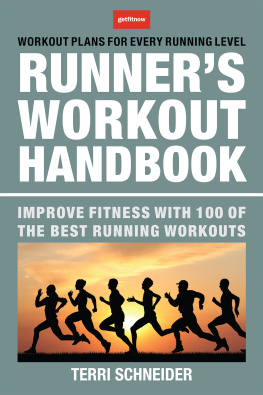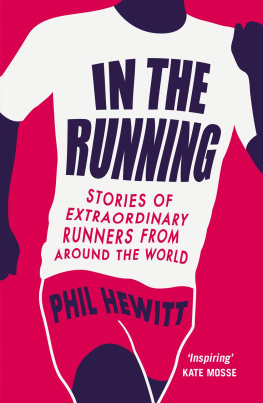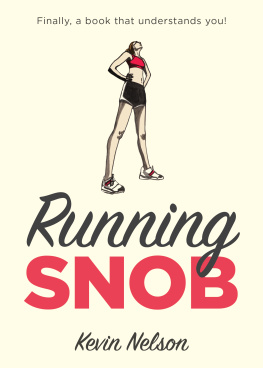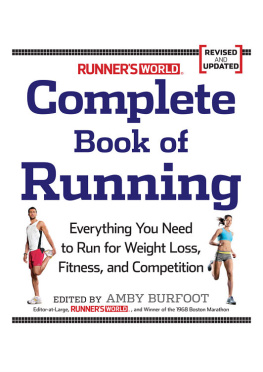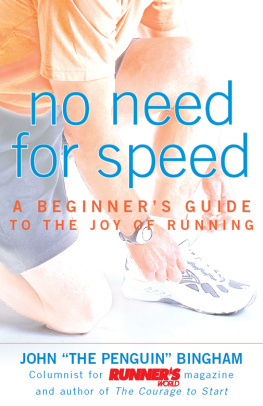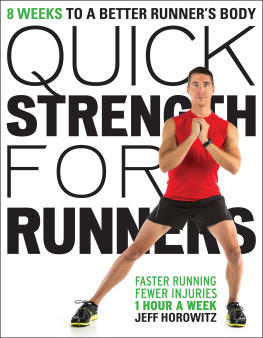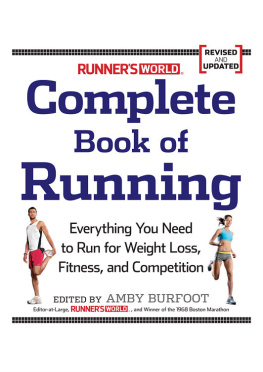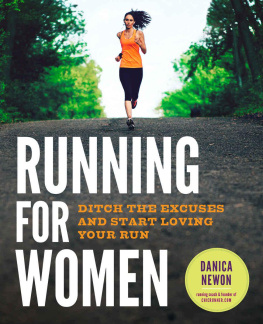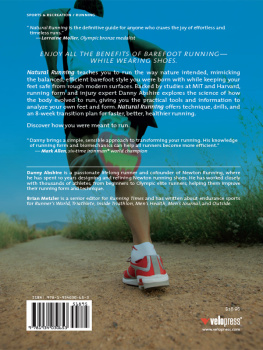

To Roy Hadfield
Your life was your legacy
CONTENTS
ACKNOWLEDGMENTS
When we sat down to write Marathoning for Mortals, it was a little like running an actual marathon for the first time. Although we had known each other for several years, we werent really sure what to expect as we tried to combine our creative energies to write a book.
With the same kind of blissful navet that most first-timers experience, we wrote and laughed and busied ourselves through the entire manuscript. And when it was complete, we felt the relief and satisfaction that come from accomplishing the unknown.
This book was much like a second marathon. The good news is that you know what to expect. The bad news is that you know what to expect. No longer nave, you experience every mileevery chapteras an event of its own. And when its finished, the feeling is more disbelief than relief.
There are people without whom this book could never have come to life. Wed like to thank Jim Luning, a wonderful photographer and motorcycle nut who took all the photos; and Teresa Nightingale, Web master supreme, who did the photo editing. Wed also like to thank Inge Johnson for the back-cover photo.
Thanks, too, to Brendan York, Adam Wille, and Jeff Haas, physical therapists at Athletico, for their help on the injury prevention chapter.
And a very special thanks to Kathy OMalley for her unwavering support, her unconditional friendship, and the use of her country house to give us a quiet place to think and to write.
John and Jenny
INTRODUCTION
Close your eyes and think of a runner. What do you see? If you see someone with 1 percent body fat sprinting alone down a deserted highway, then you need to keep reading. It aint that way anymore.
Robert Fulghum writes that everything he really needs to know he learned in kindergarten. He learned, among other things, that it is important to play fair, to share, to put things back where you found them, and to flush the toilet.
We believe that we really learned everything we need to know about running well before we even got to kindergarten. As soon as we learned how to walk, we wanted to run. We knew as toddlers that the best way to get from where we were to where we wanted to be was to run there. It still is!
We knew as small children that running for no apparent reason at all was one of lifes greatest pleasures. It still is.
The door would open, and we would run out. We ran around. We chased. We ran to and from. We ran until we couldnt run anymore, and then we stopped. Thats still a pretty good plan.
Sometime in early childhood, though, many of us discovered that as much fun as running was for us, we really werent all that good at it. We liked it. It felt good. We wanted to do it. But somehow, knowing that others were faster stole the joy from our running.
Eventually, many of us just stopped running. We stopped because we were afraid of the comparisons that others would make. We stopped because we were afraid wed look silly or slow, or that others would make fun of us.
Those images of ourselves and of others are stuck in our minds. We see other people as runners but, for one reason or another, we do not see ourselves as runners. We see younger, fitter, faster people running, but not ourselves. Well, things have changed.
Theres a revolution in running going ona change that started slowly in the 1990s and has grown into a full-fledged revolution. It started on city paths and small-town streets. It started with a few brave men and women risking embarrassment by taking their enthusiasm for running out into the open and has led to the most dramatic increase in running participation in history.
The most recent Runners World magazine survey suggests that there are nearly 24 million runners in the United States alone24 million runners. You know that they cant all be the skinny, fast characters in your imagination. Todays runners are fast and slow, skinny and not so skinny, young, old, male, female, and every possible combination of the above.
Todays runners dont even always run. They run. They run-walk. They walk-run. Some simply walk. And thats the beauty of running today. You can be a runner even if running isnt what you do.
All it takes to be convinced is one look at the thousands of participants standing in the starting corrals of large long-distance running events. In the giant entertainment events, like the Rock n Roll Marathon, nearly 20,000 men and womanyour friends, neighbors, and colleagueswill accept the challenge with bodies no better suited to the distance than yours.
Theyve accepted the challenge because they can. They already know what youre about to discover: that anyone with a willing spirit can be a runner today. Anyone, of any age, of any weight, can begin the process of becoming a runner. Its as simple as wanting to run, planning to run, and then running.
Why you run isnt nearly as important as the fact that you run. If youre like many of the people we encounter in our training programs and online, youre thinking about running to help you lose weight. The years and choices are beginning to take their toll. If thats why you want to run, youve come to the right place.
Some of you may want to shape up. Maybe your body has begun to look more like how you remember your older relatives looked. You remember, dont you? Remember that one old aunt whose sagging arm kept waving long after she had stopped saying good-bye?
A few of you may even be looking for a new challenge. Maybe youve hit that point in your life where youre wondering what comes next.
Whatever your reason to run, you have already taken the most difficult step youre ever going to take. Youve made the decisiontentatively, perhapsto find out what it will take to become a runner. No step from here forward will ever be as difficult.
The plain truth is that the only thing you have to do to be a runner is run. As obvious as that sounds, youd be shocked at how few people fully grasp the elegant simplicity of the sport.
You dont need long legs or narrow hips. You dont need powerful muscles or ripped abs. You dont need a superhuman heart or lungs. You dont need anything other than willingness.
Whats the catch? Aha Youre right. There is a catch. The catch isand theres no way to escape thisyou have to learn to run in the body that youre in right now. Those legs that you use every day are the legs of a runner. Theyre neither too short nor too long; they just are.
The same is true of the rest of your body. Its also true of your mind and your spirit. You are the one who will have to become a runner: youjust you. Theres no secret weapon, no magic pill, no flash of insight that will allow you to transcend what you are.
All of you will have to become a runner, not just the parts of you that actually run. It doesnt do any good to have the legs of a runner if you have the soul of a nonrunner. It wont do you a bit of good to train your body to accept new challenges and rewards if you leave your mind as it is. It is a total commitment. It is a full engagement of body, mind, emotion, and spirit.
Todays runner is more than just an athlete. Todays runner is athlete, coach, philosopher, poet, and storyteller. Todays runner understands that the old days of doing what someone else expected of you are long gone. Todays runner knows that the search for ones own excellence and potential must be undertaken alone.
Next page

